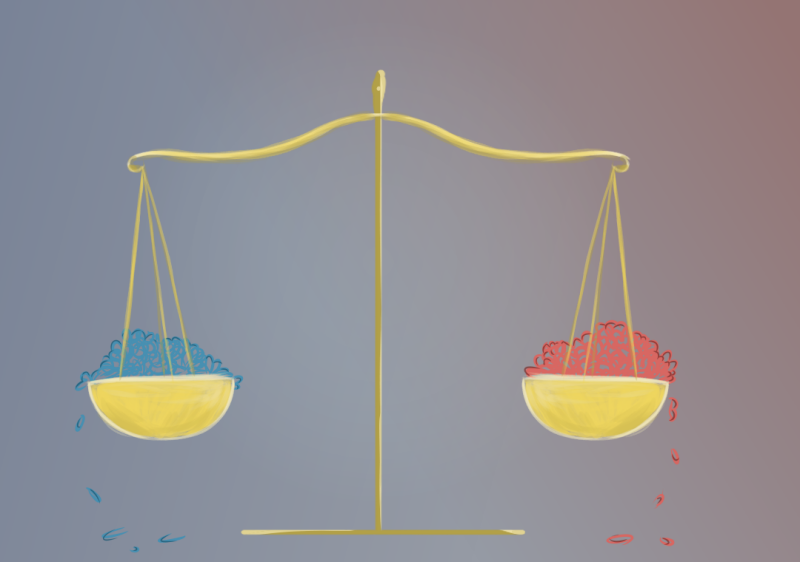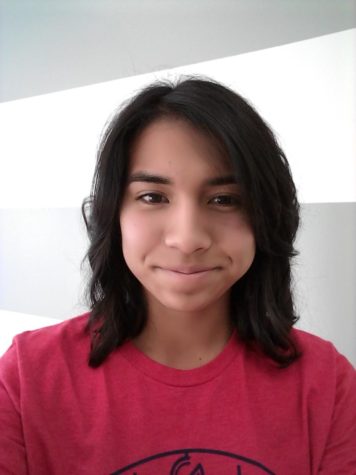Freedom vs. Safety at Parkland
Picture by Sierra Gutierrez
April 14, 2018
There are no school shootings in North Korea.
No private citizen is allowed to own a firearm in North Korea.
In fact, North Korean law enforcement is so effective that, as far as the world can tell, crime is almost nonexistent in the capital city of Pyeongyang. Individual freedom and privacy are two other things that are also a rarity in the country.
In this case, North Korea has clearly chosen safety and control over freedom and dissent.
Shocking? Perhaps not.
As a free nation, America seems to be eternally consumed by a fragile balancing act of freedom and safety. Both of these ideas are central to the notion of a free world. After all, the freedom to live one’s life as one chooses and the freedom from a constant fear of death are both things that all citizens value to some degree.
Although society strives to obtain both maximum freedom and safety, the truth is that working toward both of these goals at the same time is extremely difficult. With every step toward personal choice and freedom, the government loses a little control over what risks its people are allowed to take and vise versa. Realistically, at least as our world stands today, the best course of action would be to walk the line between the two seemingly exclusive ideals and achieve a balance that would benefit everyone.
It is also realistic, however, to be aware that even a tentative balance is hard to achieve–especially in a nation with opinions and ideologies as diverse as the United States.
And so, with uncontrollable anarchy on one side of the scale and North Korea-style totalitarianism on the other, the nation continues to struggle towards what may one day be considered an acceptable equilibrium by citizens on both sides of the political spectrum.
This endless tension affects many of the issues the country faces today, but it can be most clearly seen in the all-important Second Amendment versus gun-control debate that has taken America by storm in the past few months.
Somewhat ironically, the dissatisfaction of gun-control activist students returning to Marjory Stoneman Douglas High School in Parkland, Florida, is an interesting parallel to the struggle between the desire for freedom and the desire for safety in the lives of everyday Americans.
Largely because of the efforts of the teen survivors of the Parkland shooting, the movement in favor of more stringent gun control laws has gained unprecedented support from people around the country. Despite backlash from pro-gun organizations like the NRA, these young activists have helped convince many Americans to compromise their right to bear arms in the name of increasing the public safety, especially when it concerns students.
Similarly, Marjory Stoneman Douglas High School has taken precautions that, while limiting some freedoms, they hope will increase the safety of its pupils. The school administration has enacted policies including limiting points of entry, increased police presence, and mandatory see-through backpacks, as well as the possible addition of metal detectors in the near future. The same pupils who were ready to endorse the side of safety when it came to gun control, however, are quite upset with this sacrifice of privacy.
In an interview with CNN, Isabelle Robinson, a seventeen-year-old Parkland student, says that “It feels like being punished… It feels like jail, being checked every time we go to school.”
Kai Kober, another student interviewed by CNN, says that the school feels like it is being turned into “a police state.”
“Every day, students lose more and more freedoms at MSD… We do not welcome the militarization of MSD. It is terrible to see our school lose control over the protection of their students and their families.”
In a somewhat contradictory stance, Parkland students who call for heavy government regulation in the name of safety are also upset at their own school’s attempts to enforce policies that will also make students safer. This is because of a conflict that plagues the nation on a much larger level; They must decide what they value more: Unhindered, risky freedom, or effective but restrictive safety.
Personal control over one’s own protection directly conflicts with reliance on regulation by the powers that be– whether that is the United States government or the high school principal.
In the end, like the rest of us, the students at Marjory Stoneman Douglas High School need to decide on what they really want. Are they okay with safety at any cost, or do they acknowledge that freedom comes with risks? As students who lived through an unimaginable tragedy, leaning towards safety is understandable. As rising voices and role models for the nation’s youth, however, they should be expected to fully comprehend the implications of what they claim to value and be prepared to move forward with the consequences.




